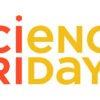Giorgio Quer et al. –
Traditional screening for COVID-19 typically includes survey questions about symptoms and travel history, as well as temperature measurements. Here, we explore whether personal sensor data collected over time may help identify subtle changes indicating an infection, such as in patients with COVID-19. We have developed a smartphone app that collects smartwatch and activity tracker data, as well as self-reported symptoms and diagnostic testing results, from individuals in the United States, and have assessed whether symptom and sensor data can differentiate COVID-19 positive versus negative cases in symptomatic individuals. We enrolled 30,529 participants between 25 March and 7 June 2020, of whom 3,811 reported symptoms. Of these symptomatic individuals, 54 reported testing positive and 279 negative for COVID-19. We found that a combination of symptom and sensor data resulted in an area under the curve (AUC) of 0.80 (interquartile range (IQR): 0.73–0.86) for discriminating between symptomatic individuals who were positive or negative for COVID-19, a performance that is significantly better (P < 0.01) than a model1 that considers symptoms alone (AUC = 0.71; IQR: 0.63–0.79). Such continuous, passively captured data may be complementary to virus testing, which is generally a one-off or infrequent sampling assay.
Read the full article in Nature Medicine.





